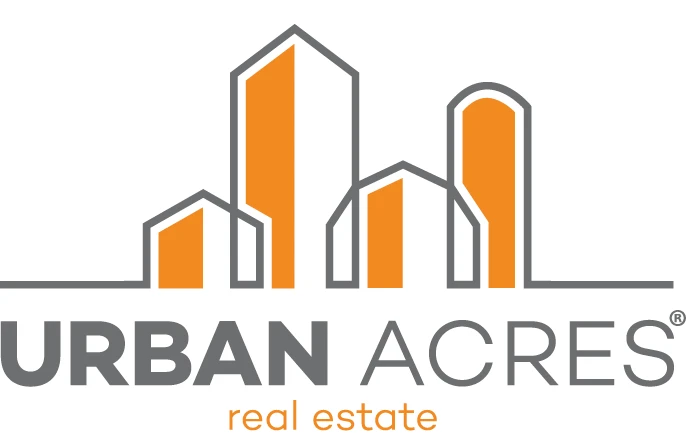You’re scrolling through listings after dinner when you see it: the house. The one with the perfect kitchen island for lazy Sunday morning pancakes, the massive tiled shower with dual rainfall showerheads, or the three-car garage you’ve been dreaming of since your teen started driving.
The problem is that you’re sitting in the home you already own. And like most homeowners, the idea of carrying two mortgages makes you break out in a cold sweat.
But buying a house before selling your current home isn’t always irresponsible. Sometimes it’s the smartest move for homeowners who’ve found their dream home or need to move on a timeline. You have options to help make this transition work for your situation, whether you’re upsizing for your growing family, downsizing after the kids have moved out, or relocating for a job.
Let’s explore those options and how to make them work, step by step!
Step 1: Look at Your Finances

Before you start daydreaming about hosting parties on the massive deck of your new home, get clear on your financial position. This isn’t the most exciting part of the process, but it makes everything else possible.
Calculate Your Current Home Equity
First, find out how much equity you have in your current home. You can get a ballpark estimate by looking at recent sales of similar homes in your neighborhood. Better yet, ask a local REALTOR® for a comparative market analysis. Subtract what you still owe on your mortgage, and you’ll have your available equity.
If your home is worth $425,000 and you owe $275,000, you have $150,000 in equity to work with. And that equity is your secret weapon for financing your next purchase.
Review Your Debt-to-Income Ratio
Lenders typically want to see a debt-to-income ratio of 43% or lower. But this calculation is more complex when you’re carrying two mortgages. Start by adding up your monthly debt payments (including both mortgage payments) and divide that number by your gross monthly income.
Let’s say your current mortgage payment is $2,200. Your new mortgage would be $2,800, and you also have $500 in other monthly debts. That’s $5,500 in total monthly debt. If your household income is $12,000 per month, your debt-to-income ratio would be about 46%. You’ll likely need to consider strategies to bring this number down or explore alternative financing options.
Check Your Cash Reserves
Take a hard look at your savings beyond your emergency fund. You’ll need cash for a down payment on your new home, closing costs for both transactions, and a buffer for unexpected expenses (like fixing your wood deck before you sell your home). Many homeowners are surprised by how quickly costs add up.
Don’t forget to factor in moving expenses, overlap in utilities, and any immediate repairs or updates your new home might need.
Get Pre-Qualified for Your New Mortgage
This step should happen early in the process. A pre-qualification letter shows sellers you’re serious and gives you an estimate of what you can afford. Be upfront with your lender about your plans to buy before selling. They can help you understand the financing options for your specific situation.
Step 2: Choose Your Financing Strategy

Now for the decision that will shape your buying and selling timeline. Each financing strategy has different requirements, costs, and timelines. The best choice is the one that fits your financial situation and risk tolerance.
Here are four options to explore:
Option A: Bridge/Swing Loans
Bridge loans are short-term financing options designed for this situation. They’re secured with your current home and generally last six to 12 months, so you have time to sell while you settle into your new place.
The lender uses your home equity as collateral for a loan that covers your new home’s down payment and closing costs. You’ll pay a higher interest rate than a traditional mortgage—often 2-4 percentage points above conventional rates—but you get the flexibility to buy without selling first.
Bridge loans work best when you have significant equity in your current home and confidence it will sell quickly. These loans are popular in strong seller’s markets where homes move fast.
Option B: Home Equity Line of Credit (HELOC)
A HELOC allows you to borrow against your home’s equity with a revolving credit line, like a credit card. You can access funds as needed for your down payment and closing costs, and you only pay interest on what you use.
Interest rates are often lower than bridge loans, and you have more freedom in how you use the funds. Many Iowa homeowners like this option because they can secure the credit line before they start house hunting, which gives them the confidence to make non-contingent offers.
The downside is that HELOC rates are usually variable, so if interest rates rise, your payments will go up, too. You’ll also need a lot of equity—most lenders require that your combined loan-to-value ratio stay below 80%.
Option C: Cash-Out Refinance
If current mortgage rates are competitive with your existing rate, a cash-out refinance might make sense. You refinance your current mortgage for more than you owe and use the extra cash for your new home purchase.
This strategy works well if you can secure a rate that’s close to your current mortgage rate. You’ll have predictable monthly payments, and the cash from your refinance can make you a more competitive buyer.
Keep in mind that refinancing comes with closing costs that average between 2% and 5% of the loan amount. You’re also increasing the debt on your current home, which you’ll need to pay off when you sell.
Option D: Asset-Based/Portfolio Lending
Many homeowners have assets beyond real estate. Some lenders offer portfolio loans that consider your overall financial picture rather than just income and debt ratios. These loans might use investment portfolios, retirement accounts, or other assets as additional collateral.
Asset-based lending can give high-net-worth individuals more flexibility if they don’t fit traditional lending criteria.
Step 3: Make Strategic Offers

Once you’ve lined up financing, you’re ready to make an offer. This is where being prepared pays off and you can go toe-to-toe with cash buyers and investors.
With a solid financing strategy, you don’t need a home sale contingency, which makes your offer more attractive to sellers. In competitive markets like the one we see in the Iowa City area, this can help you land your dream home.
Work with your agent to structure an offer that’s competitive but realistic. Include your pre-approval letter and be ready to provide proof of your financial arrangements if needed.
If your agent expects multiple offers, an escalation clause can help you stay competitive without overpaying. This clause automatically increases your offer by a specified amount above competing offers, up to a maximum price you set.
When possible, negotiate a closing date 45-60 days out. This gives you time to get your current home on the market and ideally under contract before you close on your new home. If the seller needs a quicker closing, you can adjust your selling timeline.
Step 4: Prepare Your Current Home to Sell

The moment your offer is accepted, it’s time to shift into high gear. Speed and pricing strategy are critical when you’re putting your home on the market—and that’s why we always recommend working with a REALTOR®.
A few tips to make that process as easy as possible:
Start Preparing Early
While you’re going through inspections and finalizing your sale, get your current home ready for the market. This might mean dealing with some temporary inconveniences—keeping the house ready for showings while you’re still living there, scheduling professional photography around your schedule, and tackling small repairs that will help your home show better.
Consider hiring professional stagers who can work with your existing furniture to maximize your home’s appeal. Small changes like rearranging furniture or adding new throw pillows can make rooms feel more inviting.
Price Strategically for a Quick Sale
Working with an experienced local agent is invaluable at this stage. You need to price your home to generate interest quickly, but you don’t want to sell yourself short.
Your agent will help you find the sweet spot for attracting multiple buyers and potentially selling for above asking price.
Consider Rent-Back Agreements
If you close on your new home before you sell, negotiate a rent-back agreement with your buyers. This lets you stay in your current home for a specified period after closing—usually 30-60 days—while you pay the new owners rent.
Rent-back agreements can eliminate the stress of temporary housing and give you more time to get your home organized. They’re becoming more common and most buyers are open to the arrangement if it helps close the deal.
Step 5: Navigate the Dual Closing Process

Managing two real estate transactions at the same time takes coordination and flexibility. The ideal scenario is selling your current home just before or after you close on your new home, but life doesn’t always work out that perfectly.
Here’s what you can do if you close on your new home before selling your existing home:
Coordinate Closing Dates
Work with your listing agent and your buyer’s agent to balance timelines. The goal is to reduce the period when you’re responsible for two mortgages. Even a few days can make a difference in your carrying costs.
If possible, schedule your new home closing for a Friday and your current home closing for the following Monday or Tuesday. This will give you a weekend to move and minimize the overlap.
Find Temporary Housing
Despite your best planning, your current home might sell faster than you expected, or your new home closing might get delayed. Have a backup plan for temporary housing, whether that’s staying with family, booking an extended stay hotel, or arranging a short-term rental.
This scenario is typically manageable with some planning. Your agent can help you build flexibility into your contracts so you’re not stuck with a major timing conflict.
Prepare for the Unexpected
What if your home attracts multiple offers and sells in the first week? What if it takes longer than expected to find a buyer? Walk through each of these scenarios with your agent and make sure you have a plan.
This might mean adjusting your bridge loan terms, tapping into your HELOC for additional carrying costs, or negotiating extended rent-back periods with your buyers.
Step 6: Tie Up the Loose Ends

Once your current home is under contract, you might feel like sailing off into the sunset. But now’s the time to follow through with your plan for paying off temporary financing and completing your transaction.
If you used a bridge loan or cash-out financing, use the proceeds from your home sale to pay off this temporary financing immediately. High-interest bridge financing costs you money every day, so make this your priority at closing. Your title company can usually coordinate the payoff at closing to ensure the funds go to the right place.
Once both transactions are complete, you can focus on settling into your new home. Update your address with banks, employers, and service providers. Transfer your utilities and schedule service disconnections at your old home.
Don’t forget to update your homeowner’s insurance and property tax information. Your new lender typically handles setting up escrow accounts, but you’ll still want to verify everything is set up correctly.
Make Your Move with Confidence

Buying a house before selling seems complicated, but thousands of homeowners navigate the transaction successfully every year. If you choose the right financing strategy and have professional guidance, the process is often pretty straightforward.
At Urban Acres, we’ve helped many clients buy a new home while selling their existing home. We know the dynamics of the Iowa City market and can help you time your transactions for the best outcome.
Ready to explore your options for buying a house before selling? Reach out and let’s talk about your situation. We’re here to make your next move as stress-free as possible!





